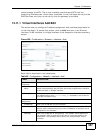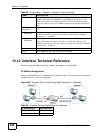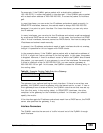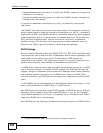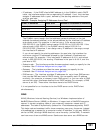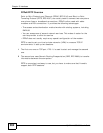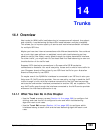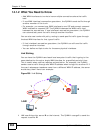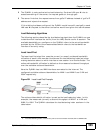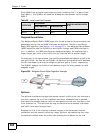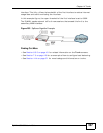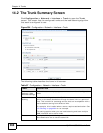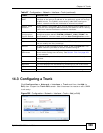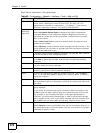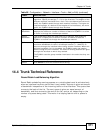
Chapter 14 Trunks
ZyWALL USG 300 User’s Guide
365
2 The ZyWALL is using active/active load balancing. So when LAN user A tries to
access something on the server, the request goes out through ge3.
3 The server finds that the request comes from ge3’s IP address instead of ge2’s IP
address and rejects the request.
If link sticking had been configured, the ZyWALL would have still used ge2 to send
LAN user A’s request to the server and server would have given the user A access.
Load Balancing Algorithms
The following sections describe the load balancing algorithms the ZyWALL can use
to decide which interface the traffic (from the LAN) should use for a session
2
. The
available bandwidth you configure on the ZyWALL refers to the actual bandwidth
provided by the ISP and the measured bandwidth refers to the bandwidth an
interface is currently using.
Least Load First
The least load first algorithm uses the current (or recent) outbound bandwidth
utilization of each trunk member interface as the load balancing index(es) when
making decisions about to which interface a new session is to be distributed. The
outbound bandwidth utilization is defined as the measured outbound throughput
over the available outbound bandwidth.
Here the ZyWALL has two WAN interfaces connected to the Internet. The
configured available outbound bandwidths for WAN 1 and WAN 2 are 512K and
256K respectively.
Figure 291 Least Load First Example
The outbound bandwidth utilization is used as the load balancing index. In this
example, the measured (current) outbound throughput of WAN 1 is 412K and
WAN 2 is 198K. The ZyWALL calculates the load balancing index as shown in the
table below.
2. In the load balancing section, a session may refer to normal connection-oriented, UDP or SNMP2 traffic.



